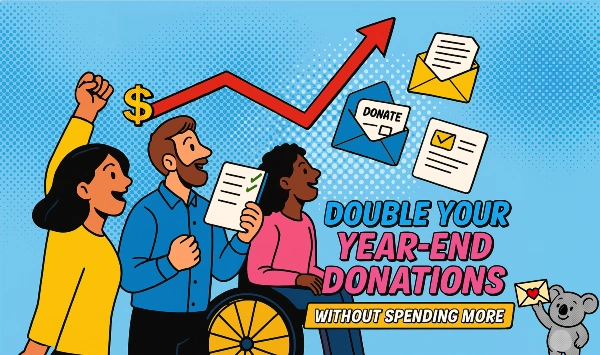One of the challenges of storytelling is finding stories in the real world in the first place.
It’s not that stories are rare. They’re happening everywhere, all the time.
But they don’t seem like stories while they happen. It’s just life.
The most common way to “gather” a story is to interview someone who knows first-hand what happened. That means interviewing someone, maybe more than one person.
To help you get the most out of the interviews you do, I’m going to show you some techniques for maximizing those conversations. Then I have a few other hints I’ve learned as an interviewer.
How to interview
The most important thing about interviewing people for their stories is this: It’s about listening.
I know that sounds obvious, but it’s easy to miss. Because most conversations we have are about half listening, half talking. Interviews should be more like 90% listening, 10% talking. That requires an adjustment to the way we connect when interviewing.
- Make it comfortable for them. Conduct the interview on “their” territory if possible.
- Tell them the purpose of the interview. Most people are happy to share their stories, but it’s likely they don’t understand what you’re going to do with their story. “We want to use your experience to help people understand the situation so they’ll be encouraged to donate.” Something like that will help them feel more connected.
- Establish a human connection. The more connected people feel with you, the interviewer, the easier it will be for them: “You went to East High School? So did I!” “Oh, you’re from a large family? Me too!” Look for things that connect you at the beginning of the conversation.
- Ask open-ended questions. If you ask yes-or-no questions, you’ll just get yes and no answers. Instead of asking, “Was it painful when you lost your job?” Ask, “Tell me what it was like when you lost your job.” If you do ask a yes or no (or get a yes or no even if you didn’t ask it) ask them to enlarge: “Tell me more about that.”
- Shut your mouth! People need time to think about your question and their answer. Give them time by staying silent after you ask something. This is one of the most difficult skills to master as an interviewer, because all your instincts will be to fill the silence with your voice! Those silences may feel awkward, but filling them means less good material for your story.
- Record the interview. Even if you’re good at note-taking or you know short-hand (does anyone know shorthand anymore?) – recording frees you to concentrate on them instead of your notes, and makes things feel for them. There is great voice-to-text that really helps with getting the story without spending a lot of time transcribing.
From transcript to story
A well-told story is a mix of narrative (your words) and quotations (their words). Use your words for facts and context and their words for emotion and personality.
Here’s an example of part of an interview with a young mom struggling with poverty:
To send your child to bed hungry, knowing that her stomach is growling and they’re feeling that, it’s very painful and very disappointing in myself, you know. To not be able to feed her is not what any parent wants — everybody wants their children to be fed and be healthy, you know. It’s important. It’s painful to see your child hungry.
That’s good stuff, and any writer might be tempted to use that extended quote as-is in the story.
But you’ll get a more concise – and emotionally powerful – version by mixing narrative with quotation:
Jackie lives with a deep source of sadness that any Mom can understand.
“To send your child to bed hungry, knowing her stomach is growling … it’s painful,” she says, wiping a tear from her eye.
Remember, when you tell stories for fundraising, you aren’t doing journalism – studiously revealing who, what, where, why, and when.
You are attempting to create a whole new story: One the reader enters by donating. That means keeping things simple and straightforward.
But most of all, emotional.
The non-negotiables of ethical storytelling
It’s important to remember that the stories we tell for fundraising aren’t just “tools” for us to use. They are pieces of the lives of the people we get the stories from. The stories belong to them, not to us!
That’s why I believe we need to hold on to three things for every story we tell:
Non-negotiable #1: Get permission. The stories belong to the people who tell them. It’s their property, part of their lives and hearts. That’s why we must start with permission. If they aren’t comfortable sharing their story, we don’t share it. Period. If the story is about a child, make sure you have permission from an appropriate adult.
Non-negotiable #2: Tell the truth. I know this should go without saying. But it obviously doesn’t. We need to be scrupulously true and correct. Don’t cut corners, don’t exaggerate. Fact-check. Absolute truth is the only allowable story for ethical fundraisers.
Non-negotiable #3: Don’t be a jerk. It might be possible to get around one of the other non-negotiables with clever maneuvering. Treat your sources as you would yourself or someone you love.
Fundraising is a challenging career – but one of the best lives you can choose. To help you advance your career in a proven, logical, experience-based way, we’ve created a new Starter Guide for Your Fundraising Success Path. Download it now and you’ll start your journey to mastery and success in the best career on Earth!
Please share your experience by leaving your reply below. We’d love to learn from your experience.












1 Comment. Leave new
Thank you for writing this. I have been perplexed by why I seem to be the only one in my department who can get impact stories from talking to staff. I had a staff member suggest that we keep a story bank so when “we” get impact stories, they could be saved in one place and we could use an excel sheet to keep track of how we used each story. I was the only person who added stories. ???? They would talk to the staff but never seemed to talk about stories of impact. I started feeding them prompts. Ask, “When is a time you really felt yo u made a difference for someone?” “Who is someone you were really able to help lately?” “What needs are people talking about when they come to get help?” “Do you see any new trends in the requests for help you are getting this year?” “What gives you the feeling that you have had a really great day?” “What makes you feel successful at your job?” For me, the really hard interviews are the ones where people really can’t think of any stories and I get the impression that they don’t have serious conversations with their clients and they have no rapport with their clients. It’s so frustrating. It’s frustrating when fundraising staff don’t show any curiosity and don’t ask follow up questions. I’ve had staff write down verbatim what the program person says when they don’t understand it and ask no questions. I told them, “When you are listening to a staff story, you need to ask enough questions that you could tell the story to your spouse and explain everything.”